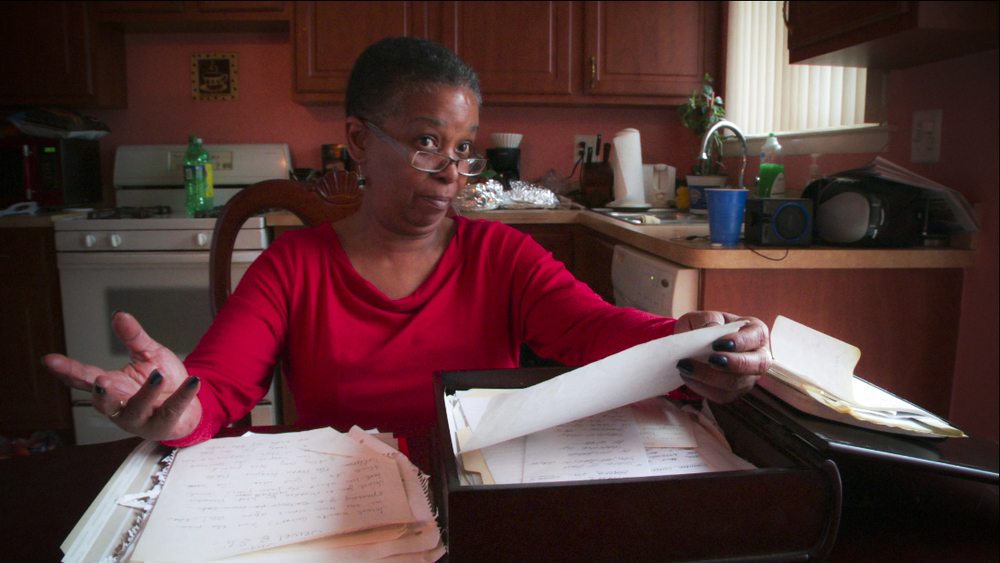
When I finished viewing Love Between the Covers, a documentary which explores the writers, readers, publishers in the romance community, I had two overriding thoughts.
One was a reinforcement of how proud I am to be part of this community of incredible people.
Two was that the mainstream comic book industry could learn a great deal about how to relate to readers from the romance community.
The romance book industry is, quite literally, a billion dollar plus industry, with sales over $1.08 billion in 2013. But, as happens with many geek pursuits in the past, it’s also an industry where its consumers are often sneered at and looked down upon. Yet while many comic book communities (including creators and company spokespeople) are full of cynicism and sometimes outright meanness, the romance community has basically closed ranks to create a safe space for its readers and writers. This is a space where readers make lifelong lasting friendships with not only each other but with writers as well, and where readers know exactly why they love their favorite stories: because they’re about women, and they’re about hope.
The hope part is where I find the similarity between romance fiction and superhero comics, as they’re both heavily invested in things turning out all right for our heroes.
But press coverage of romance fiction is often so cringe-inducing that I was initially skeptical of Love Between the Covers because so much coverage of the romance industry is, well, sniggering. It’s basically the equivalent of comic fans seeing the “Comics! Not Just For Kids Anymore!” expectation whenever they’re written about in the mainstream press.
But Director/Producer Laurie Kahn focused on going inside the romance community and letting readers and writers tell their own stories. That’s clear immediately with the upfront statement that goes to the heart of the contradiction about the romance industry. “We pay the bills,” states the first interviewee, and so romance does for the book industry. Then the documentary proceeds to tell us why.

In one of several segments, we travel with New York Times Bestselling author Beverly Jenkins conducting a road trip with her readers and visiting several historic sites that detail the history of slavery. Jenkins, an African-American, connects with these readers. They understand her, she understands them, and she’s using romance stories to provide hope and love in the history of slavery in the country.

There’s also the case of successful publicist Kim Castillo. She was a reader, first and foremost, with a job–not a career. She wrote to one of her favorite authors, New York Times Bestseller Eloise James aka Mary Bly. James wrote her back and they started a correspondence. The entire story is in the documentary but, to keep it short, Castillo eventually began her career as a publicist and now is one of the most successful ones in the romance industry. Now she has a career, not a job. In addition to that, she has a group of friends that she met online, all voracious romance readers, who are a tight-knit community that offers friendship and emotional support along with lots of discussions of romance novels.
Again and again in Love Between the Covers, you can see that readers and writers especially understand and support each other. Oh, it’s not perfect, of course, but to see someone like Beverly Jenkins touring with her readers, or to see Nora Roberts talk to her readers one by one after they’ve waited in line for literally hours for pictures and signed books is to see a bond that I don’t often see in comics between readers and writers and publishers.
Let’s take the recent mess about Captain America becoming a Hydra agent, which was basically an official trolling of its audience by Marvel in order to drum up interest in what promises to be a good series. Yes, Marvel assured us that this was no trick, no false Cap, it was a twist that would stick and readers must READ IT NOW or risk being left behind. That kicked off a whole storm of criticism, kvetching between readers, etc., and Marvel was happy to have all that publicity.
Of course, the next issue showed that there’s nothing new under the sun because, of course, it’s one of those comic book science tricks that involve the Cosmic Cube and, no, it’s not permanent, Cap has implanted memories. Hah! Hah! Marvel seemed to say, gotcha again. But, hey, it’s a good story, so no harm, no foul. And we sold a lot of books. All good, right?
But stunts like that are damaging to the overall relationship between readers and creators/publishers. It’s a law of diminishing returns. In order to grab the attention, you have to up the ante until it becomes ridiculous and then the readership starts rolling their eyes and, of course, they won’t believe anything you say the next time. Stunts like this breed cynicism and disengagement. It’s no wonder that comic readers, particularly superhero readers, are so cynical.
Now, it’s not an exact market comparison, since novels are published in their entirety and the comic book industry relies on single issues from month to month for sales, but I have never seen a romance author or publisher actively troll the readership of a popular series by saying:
“We’re gonna do this! You can’t afford to miss this next book!” Does that. Then reverses that.
Can you imagine the uproar if Nora Roberts started doing publicity for her next In Death series by saying “I’m totally going to kill off Roarke! I swear! You must read this!” Then Roarke dies. But the comes back at the end because it’s all a trick. Gotcha, readers!
Romance readers would be livid. They would hate being tricked. But, most importantly, sales would drop. It would be a commercial failure.
Of course, Nora Roberts would never do such a thing. I can’t think of a single romance author (or publisher) who would do that. Because the romance industry is built on good long-term relationships. It believes that the way to loyal readers is not to troll and trick them, it’s to treat them with respect and gratitude and sometimes with jokes and fun, and a sense of humor about the books they write.
Readers, too, have a sense of humor about how the world sees their favorite books, else one of the most popular romance sites wouldn’t be called Smart Bitches Love Trashy Books.
However, for all that, the documentary and the romance industry does have some flaws.
The documentary’s focus on an LGBTQ author Radclyffe glosses over the fact that the writers and editors of those books had to create their own publishing niches and encountered some pushback even from the Romance Writers of America, which once suggested defining romance as “between one man and one woman.” That stung many of the authors in the community for years but this year, the RWA Board apologized for that effort, and the board has openly gay members.
That’s progress but it’s still not perfect.
Jenkins’ prominence in the documentary is great but it gives the impression that the industry is not as white as it actually is. The readership is ready for more diversity in their fiction but, in this case, the publishers (especially the mainstream New York City publishers) are concerned about spending money acquiring books with a so-called “niche” audience.
The RWA has also recently started advocating for more diversity in the publishing industry, as there exists the same bias for white authors over authors of color—for instance, Harlequin has a special line for just African-American romances, and many publishers pigeon-hole writers of color into one area.
But, overall, what the documentary reminded me is how much support and professional knowledge is in the romance community and how often the idea seems to be “let’s help,” from writers helping new writers to readers helping new readers find books. See John Scalzi’s experience at the Romantic Times Convention, where he was not treated as a “fake romance guy,” but as a potential new romance reader.
It just seems to me that sometimes the comic community feeds on negativity, whereas the romance community feeds on support and positivity. I’m not sure how to change that about comics and it’s certainly not the case for every comic pro, but you can see in exceptions like Kelly SueDeConnick and the Carol Corps how that group morphed into what I often see in romance circles: a network of readers helping and supporting each other, not just the comics they love.
Mainstream comics could use so much more of that.





Technically the site is “Smart Bitches, Trashy Books”.
Great piece! Enjoyed and will have to watch the documentary. I’ve heard so much about it.
One of the reasons why superhero comics include plot twists is because they are serial fiction. They are soap operas for males. (Compare and contrast with TV’s soap operas regarding plot twists.)
You can’t have lasting change, so you create the illusion of change.
Romance novels are self-contained. But they, too, have plot twists, because that’s the nature of Rising Action. Girl meets Boy, Boy and Girl fall in love, Girl breaks off the relationship because of an assumption, Girl realizes her mistake, Boy and Girl live happily ever after.
Yeah, it’s formulaic. (I love Harlequin’s guidelines for each of their series!) But given the huge output from the publishers (each Harlequin series usually pubs once a month, sometimes once a week), it helps to have a system in place to facilitate writing.
A counterpoint to RWA’s inclusivity:
http://gimpnelly.tumblr.com/post/145711702515/comics-and-the-rwa
I do wonder… what happens if there is an influx of cis-males attending the RWA conferences, either as associates or professionals? Will they experience the same demographic problems that comics is currently troubled with?
What culture shocks have rattled the RWA in the past?